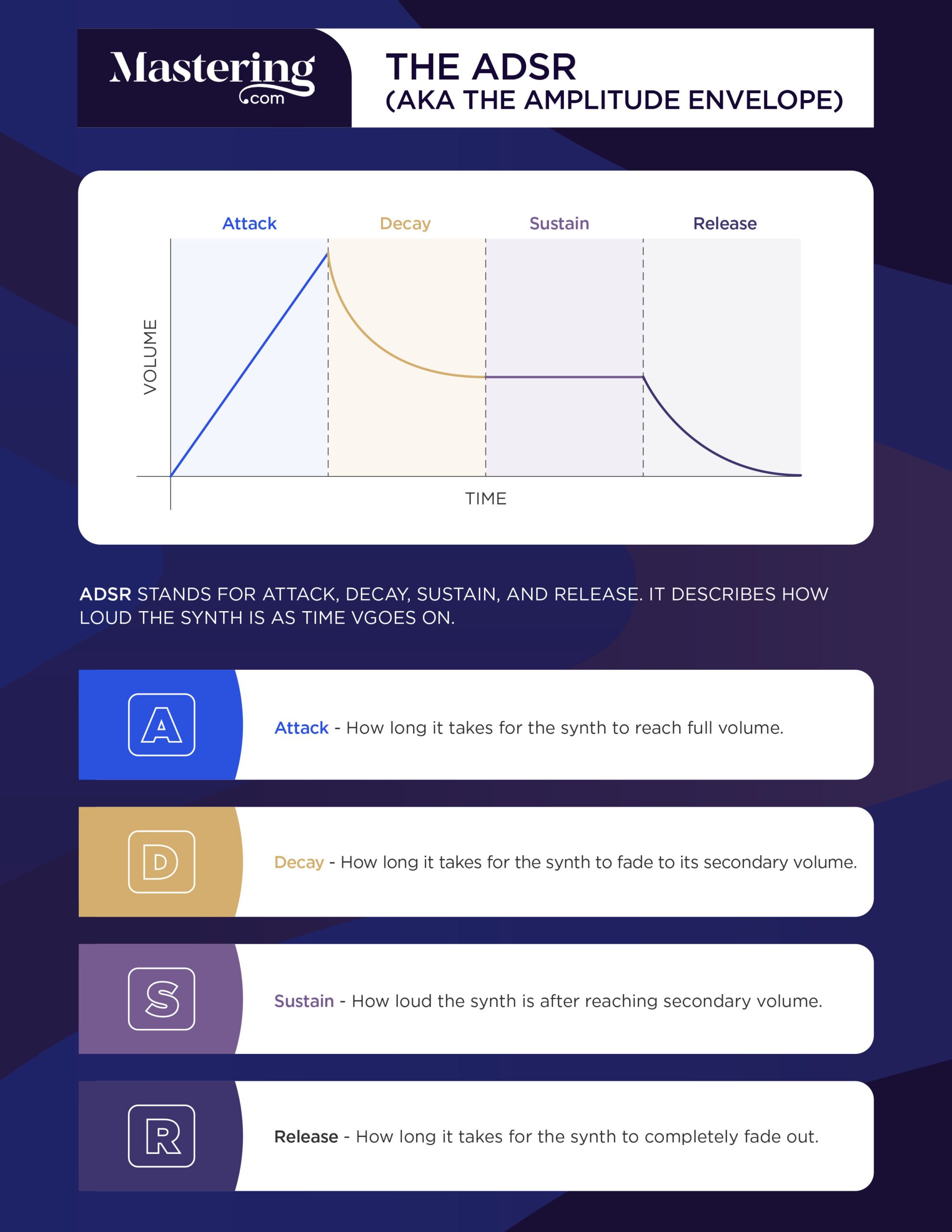FM synthesis is one of the most powerful forms of synthesis out there. And also one of the most confusing.
It’s an incredible tool for any musician… but it can be daunting.
So I’ve put together this guide covering the basics of FM synthesis to help you get started.
By the end of this article, you’ll learn how FM synths work and how you can create a simple synth sound using FM. So keep reading if you want to take your songs to the next level using these classic synths.
[Header image provided by Gavin Whitner]
I’m guessing you’re here because you want to make your mixes sound professional. We put together a brief training that covers a totally new approach to music production. Until now, everyone has been teaching production totally backward. Just click below to watch.Get industry-quality every time (steal this framework)
But if you just want to learn about fm synths specifically, keep reading.
Before We Start…
This is the third article in our “Synthesizer 101” series. The first guide of the series covered the basic building blocks of the synth.
If anything in this article confuses you, I probably talk about it there. Check it out below!
What Are Synthesizers? (The 4 Basic Building Blocks of Synths)
Additive Synthesis and Subtractive Synthesis (How Do They Work?)
History of FM Synthesis
Frequency modulation (FM) synthesizers are some of the most famous synths ever known. Even if the name FM synthesis doesn’t ring a bell, you’ve definitely heard it in action.
A few different FM synths were made during the late 1970s and early ‘80s. But it was Yamaha’s DX7 that really blew up.

Released in 1983, the DX7 quickly found its way into the hands of musicians all over the world.
It clinched its place as the synth of the ‘80s. Phil Collins, Prince, and Brian Eno are just a few of the artists who used it in their recordings.
FM is known for its crunchy basses, sharp bells, and clear electric pianos. From upbeat anthems to heart-wrenching ballads, FM found its way onto songs of all sorts.
Check out some of the DX7’s default sounds. I think you’ll find a lot of them sound familiar.
FM was wildly popular in the ‘80s. But musicians were mostly using the premade sounds that came with keyboards.
It wasn’t until the following decades that artists started delving deep into the possibilities FM has to offer.
These synths are anything but relics of the past. They’re still used today in everything from future bass to indie pop. FM is a formidable tool in any musician’s arsenal.
FM Synthesis: How It Works
FM, or frequency modulation, is all about combining two signals to create an entirely new one.
Remember LFOs?
NOTE: We released a great video on how FM Synthesis works:
LFOs are extremely slow sound waves that can be applied to various parts of your synth.
Instead of creating a new sound wave that you hear, LFOs are used to make cool effects. For example, you can make your synth’s pitch move up and down to add some vibrato.
FM LFOs do the same thing but with fast waves instead of really slow ones.
It’s kind of like cooking.
When making a nice dinner, you’ll probably add some kind of spice or herb on top of the meal. This extra ingredient brings out some totally new flavors in the dish.

In FM synthesis, you’re sprinkling one sound wave on top of another like a flavorful spice. In the end, you get a totally new sound.
FM uses two different kinds of oscillators: carriers and modulators.
Carriers are basically just regular oscillators. They create the sound wave that we hear.
Modulators are the spice. A modulator creates a sound wave, but we don’t directly hear the sound it makes.
The sound wave from the modulator is sent into the carrier oscillator. This means the modulator changes the actual shape of the sound being made by the carrier.
That wording might be kind of confusing at first, but think of it like this:
When you run a guitar through a distortion pedal, you apply distortion to the initial sound of the guitar. In FM synthesis, you’re applying another sound wave to the initial sound to create something new.
A Quick Note
The oscillators in FM synths are often called operators. So if you see something called an operator on your synth, that’s just another word for the oscillator!
FM in Action
Now that we’ve got a good idea of how FM works, let’s make an actual sound using FM synthesis.
I’ll be using Native Instruments’ FM8, but most DAWs come with an FM synth. Before you go out and by a fancy new synth, get comfortable with the ones you already have.
Google your DAW of choice and the words “FM synth.” That should help you figure out which synth in your DAW uses FM.
FM synths all do the same thing, so you should be able to do everything I’m about to show you in your own synth.
But different synth plugins have different visual interfaces. So you’ll want to watch tutorials for your synth to make sure you’re getting the most out of it.
For example, this video on FM8 will get you up and running with this powerful synth:
First, we’ll need to pick out a carrier. Remember, the carrier is the oscillator that you actually hear.
Let’s branch out a little bit and use a saw wave as our carrier.

Now that we’ve got a basic sound going, it’s time to modulate it. Let’s use a sine wave as our modulator.

Of course, we aren’t actually hearing the sine wave itself. We’re just using it to change the shape of our initial saw wave.

When you put them both together they sound like this:
I think that sounds pretty cool! It sounds way more full and warm than either of the sounds by themselves.
To get this sound across the finish line, let’s dial in the amplitude envelope (AKA the ADSR).


I think this would sound really cool as a pad.
Pads typically hang in the background of a song and provide some nice ambiance. Pads often make a song sound more lush.
To turn this into a pad, I’m going to give it a long attack time and an even longer release. This’ll naturally push it back in the mix.

The end result sounds like this:
Now that’s starting to sound like a real synth!
But before we call it done, I want to try one last thing: effects.
By putting a chorus and some tremolo on the sound, we can give it a subtle shimmer that really makes it pop.
Experiment with the different ways effects can take your sound from good to great.
Getting Creative with FM Synths
A lot of FM synths will let you use more than two oscillators.
You can make even more complex sounds by adding in more modulators.
For example, we could refine our current sound by modulating the carrier with a triangle wave as well.

Or we could modulate the sine wave with this third oscillator.

If we wanted a more harsh sound, we could even feed the signal from the carrier back into itself.

Once you add in a couple more oscillators, the possibilities with FM are nearly infinite.
Many FM synths also allow to you turn up specific types of frequencies.
To make something sound more musical, you can turn up the harmonic frequencies.

This is great for imitating pianos and other melodic instruments.
Or you could turn up the inharmonic frequencies.

This’ll make your synth sound more harsh. It’s really helpful for making bell sounds or crunchy synth leads.
Conclusion
Now that you’ve got the basics under your belt, take some time to experiment with FM.
There are countless possibilities to inspire new directions for your songs. And if you find yourself unsure about how FM works, dip back into this article for a refresher.
If you want to dig deeper into music production and learn what it actually takes to make mixes that sound pro… And you’re an intermediate or advanced producer… Be sure to check out the free masterclass: Enjoy!Next Steps
A Quick Note
This is the third article in our “Synthesizer 101” series. If you’re unsure of something in this article, go back to the basic building blocks in the first guide.
Check out the articles in this series below!
What Are Synthesizers? (The 4 Basic Building Blocks of Synths)
Additive Synthesis and Subtractive Synthesis (How Do They Work?)










